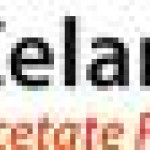- Industry: Textiles
- Number of terms: 9358
- Number of blossaries: 0
- Company Profile:
Celanese Corporation is a Fortune 500 global technology and specialty materials company with its headquarters in Dallas, Texas, United States.
A shuttleless loom that uses small, bullet-like projectiles to carry the filling yarn through the shed. Fill is inserted from the same side of the loom for each pick. A tucked selvage is formed.
Industry:Textiles
Continuous filament yarns that have been bulked during manufacturing by the fiber producer.
Industry:Textiles
A process for producing a pattern on yarns, warp, fabric, or carpet by any of a large number of printing methods. The color or other treating material, usually in the form of a paste, is deposited onto the fabric which is then usually treated with steam, heat, or chemicals for fixation.
Industry:Textiles
Small amounts of twist, usually ½ turn per inch or less, applied to yarns by the manufacturer to provide cohesion of filaments for further processing.
Industry:Textiles
A mediumweight, plain-weave fabric made of carded yarns, usually cotton or polyester/cotton blends, with counts from 28’s to 42’s. Millions of yards of printcloth are printed annually and other millions are finished as white goods. Large amounts of the goods are also used in the greige for bags, containers, and base fabric for coated materials.
Industry:Textiles
The mixture of gum or thickener, dye, and appropriate chemicals used in printing fabrics. Viscosity varies according to the types of printing equipment, the type of cloth, the degree of penetration desired, etc.
Industry:Textiles
A fabric with designs applied by means of dyes or pigments used on engraved rollers, blocks, or screens.
Industry:Textiles
Magenta, yellow, and cyan (red, yellow, blue); these are the subtractive primaries used when mixing dyes, paints, etc., to make all other colors. In the CIE (Commission Internationale de l’Eclairage) system of color measurement, which is the international system most widely used today, the primary color vectors are red, green, and blue-violet. These are additive primaries based on the perception of color of reflected light by the human eye.
Industry:Textiles
The relatively low tension applied to remove kinks and crimp when mounting a specimen preparatory to making a test or to a textile processing operation, etc.
Industry:Textiles
The material, usually woven or nonwoven polypropylene or jute, into which a carpet is tufted. The primary backing allows the positioning of each tuft and holds the tufts in position during processing, after which a secondary backing is applied to provide dimensional stability.
Industry:Textiles
